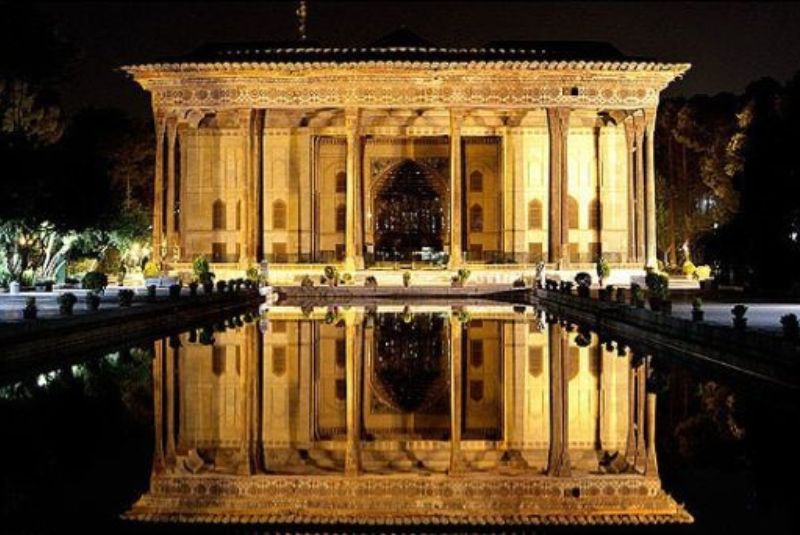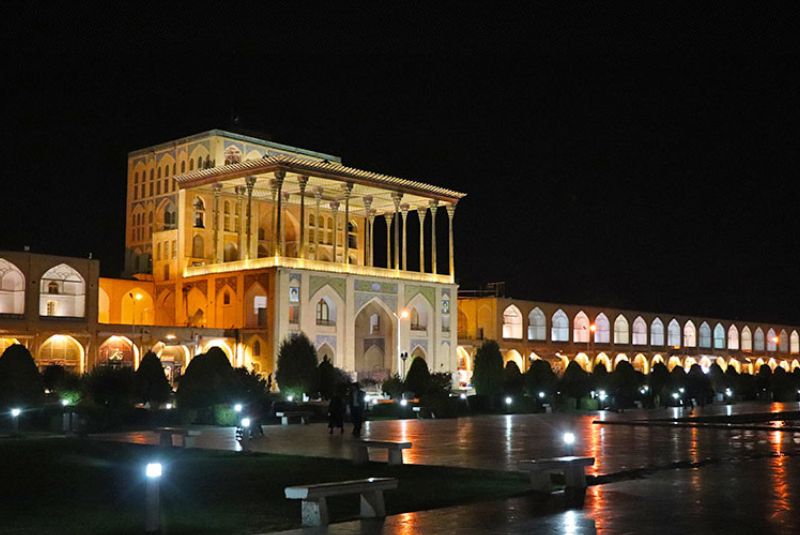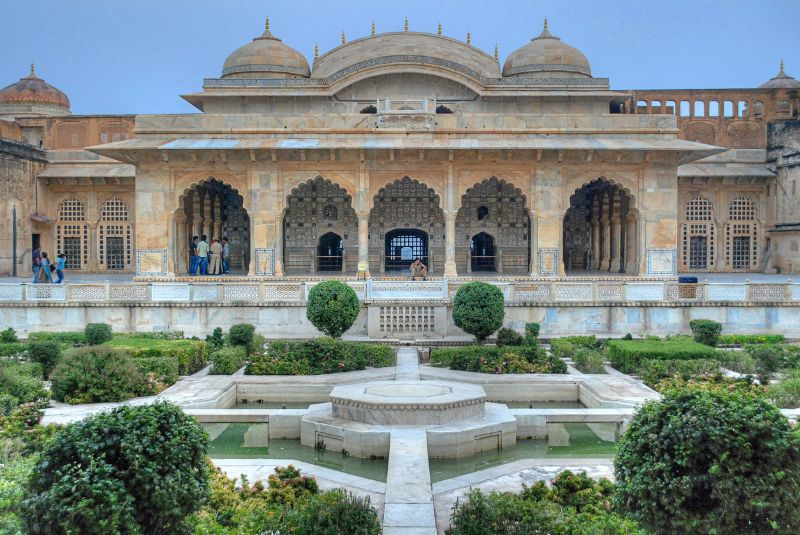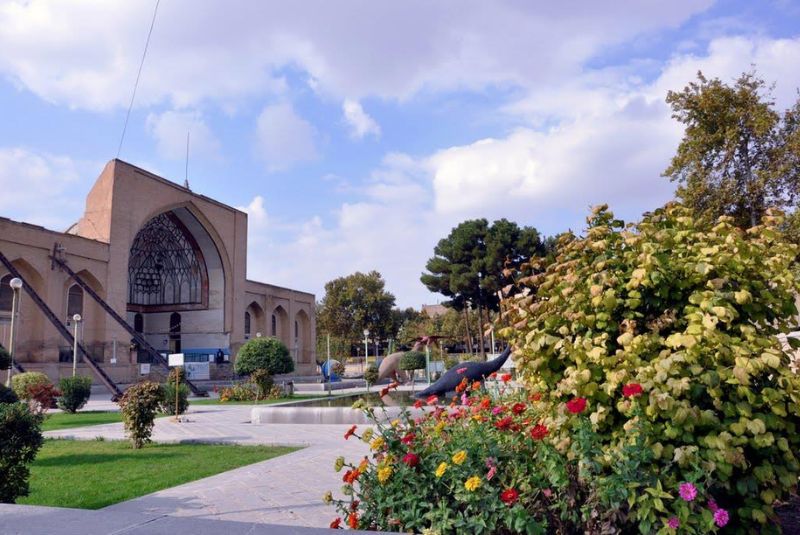Isfahan Historical Palaces | Architectural Marvels
As one of the oldest cities in the world, Isfahan has played a pivotal role in shaping the cultural and architectural landscape of Persia.
With a history dating back over 2,500 years, the city has been a thriving center of commerce, culture, and politics.
The city served as the capital of the Safavid Empire during the 16th and 17th centuries, a period that witnessed unprecedented artistic and architectural achievements. Isfahan, often featured in travel plans to Iran, stands out as a prominent and essential tourist attraction within the country.
Among the numerous cultural treasures, Isfahan historical palaces stand out as iconic symbols of the city's grandeur. These palaces, steeped in history and architectural splendor, reflect the opulence and refinement of the Safavid era. Highlighted below are several of the prominent historical palaces in Isfahan.
List of Isfahan Historical Palaces
- Chehel Sotoun Palace
- Ali Qapu Palace
- Hasht Behesht Palace
- Chaharbagh Palace
- Teymouri Hall
Isfahan Historical Palaces Facts
- Isfahan's palaces, serving as the Safavid capital in the 16th and 17th centuries, were pivotal centers of power, hosting royal functions and shaping the Safavid political and cultural landscape.
- Isfahan's palaces have left a lasting impact on Persian architecture, influencing subsequent generations with their intricate tilework, courtyard designs, and innovative architectural elements.
- These palaces acted as hubs of artistic and intellectual activity, attracting scholars and artists. The exquisite murals, frescoes, and decorative arts within reflected the cultural vibrancy of the Safavid period.
- Isfahan historical palaces' inclusion in the UNESCO World Heritage List signifies their universal cultural value and global recognition as exceptional examples of human creativity and heritage.
- Isfahan's palaces stand out for their architectural innovations, lush gardens, and intricate designs, contributing uniquely to the broader narrative of Persian palace architecture.
Interested in visiting Isfahan City?
Check out our Isfahan tour packages to find an itinerary that suits you best
or...
Design your own tailor-made itinerary and include Isfahan attractions in it by yourself, today!
1- Chehel Sotoun Palace

Isfahan Chehel Sotoun Palace has roots dating back to the 17th century during the Safavid era. Constructed under the reign of Shah Abbas II, the palace served as a royal pavilion for the Shah and his court. The name "Chehel Sotoun," translating to "Forty Columns" in Persian, alludes to the twenty slender wooden columns reflected in the adjacent pool, creating an illusion of forty columns.
Chehel Sotoun Palace is an architectural amalgamation of Persian and Safavid design. The pavilion features a raised terrace supported by twenty wooden columns, leading to a central hall adorned with intricate frescoes and tilework. The wooden columns are elegantly mirrored in the surrounding pool, enhancing the visual grandeur of the palace.
The palace is celebrated for its vibrant frescoes and murals, depicting historical and mythical scenes. The palace walls narrate tales of Safavid victories, courtly ceremonies, and poetic themes. The exquisite Persian miniature-style paintings showcase the artistic prowess of the Safavid period, encompassing themes from epic battles to poetic love stories.
| Read more: Best Hotels in Isfahan to Stay
2- Ali Qapu Palace

Isfahan Ali Qapu Palace, situated in Isfahan, Iran, bears witness to the grandeur of the Safavid era during the late 16th century. Construction of the palace began during the reign of Shah Abbas I and was completed under Shah Abbas II. Originally designed as a gateway to the royal complex, Ali Qapu evolved into a magnificent palace.
The architectural design of Ali Qapu exemplifies the sophisticated aesthetic of Safavid architecture. The palace stands six stories tall and features a symmetrical facade adorned with intricate tilework and calligraphy. Notable elements include a monumental wooden entrance door and a spacious vestibule leading to the inner chambers. The upper floors house a series of stately rooms, each uniquely embellished with ornate decorations.
Ali Qapu is renowned for its Music Room, a marvel of acoustic engineering and artistic embellishment. The Music Room's walls are adorned with delicate frescoes, and its elevated wooden balcony served as a space for musicians to entertain the court. The intricate muqarnas (stalactite) ceiling adds to the room's aesthetic appeal, reflecting the artistic sophistication of the Safavid period.
The palace's terrace, featuring a distinctive elevated balcony, provides panoramic views of Isfahan's historic Naqsh-e Jahan Square. This balcony, supported by twenty slender columns, served as a vantage point for royal ceremonies and festivities, showcasing the strategic and aesthetic importance of Ali Qapu in the Safavid court.
| Discover: Best Restaurants in Isfahan
3- Hasht Behesht Palace

Isfahan Hasht Behesht Palace is not a grand palace meant to house a court or large gatherings. Instead, this enchanting two-story pavilion, whose name literally translates to "Eight Paradises," served as a peaceful retreat for Shah Suleiman I of the Safavid Empire during the 17th century. Built in 1669, its elegant and richly decorated structure stands as a prime example of late Safavid architecture, seamlessly blending exquisite craftsmanship with harmonious geometric design principles.
The distinctive "hasht-behesht" (eight paradises) plan forms the foundation of the palace. Its octagonal layout features a central octagonal hall surrounded by eight smaller rooms, each accessible through lofty arched doorways. Four larger sides showcase majestic balconies (iwans), adorned with slender wooden columns that add to the structure's grace. Abundant natural light streams through intricate lattice windows, creating a mesmerizing play of shadows throughout the interior.
The beauty of Hasht Behesht extends far beyond its form. Its lavish interior decoration is a true celebration of Safavid artistry. Walls are adorned with captivating murals depicting hunting scenes, verdant gardens, and delicate floral motifs. Expansive surfaces are enlivened with intricate multicolored tiles, showcasing geometric patterns and elegant Arabic calligraphy. The use of prismatic mirrors adds a touch of magic, reflecting light and creating illusions of endless space.
| Read more: Best Dishes in Isfahan You Must Try!
4- Chaharbagh Palace

Constructed during the rule of Shah Abbas I in the early 17th century, Chaharbagh Palace, also known as Covered Palace or Rakibkhane Mansion, stands as a venerable structure in Isfahan. Originally built at the beginning of the 11th century in the Hijri calendar, the palace underwent changes during the Qajar era. It served various purposes, including housing the ruler of Isfahan, such as Sultan Masoud Mirza. Transitioning through the Pahlavi period, the palace initially served as the governor's residence and later transformed into the Isfahan civil registry office. Today, it has found a new purpose as the Isfahan Contemporary Art Museum.
Nestled at the heart of Isfahan, Chaharbagh Palace shares proximity with distinguished landmarks like Chehelston Palace, Ali Qapu, Ashraf Hall, and Tohidkhaneh. Dating back to the early 11th century in the Hijri calendar during Shah Abbas I's reign, the palace played a crucial role in the Safavid government complex. The term "Raqibkhaneh" implies its original function as a storage space for equestrian equipment and governmental supplies.
| Suggestion: Top 5 Bridges in Isfahan over Zayanderud River
5- Teymouri Hall

As one of the oldest Isfahan historical palaces, Teymouri Hall, an intriguing architectural structure located within Isfahan's Dolatkhane complex, holds historical significance despite undergoing various transformations over the years. Its origin dates back to the Timurid period, although the exact construction date remains unknown. Historical records suggest a commission by Timur Lang, showcasing his interest in art and the subsequent embellishments made by his descendants during their stay in Isfahan.
Throughout the Safavid era and successive dynasties, Teymouri Hall witnessed alterations and additions, leading historians from the Safavid period to nickname it "four ponds," or “Chahar Hoz” in Persian, owing to the presence of a water pond in front of the hall. The Qajar era saw repairs, and the hall served as a court building. In the early years of the Pahlavi rule, it was repurposed for military use and later renovated in 1327 to become the officers' club.
Teymouri Hall, with its diverse architectural influences, features an expansive main hall complemented by an elevated porch. The interconnected rooms boast captivating and intricate decorations, offering a visual journey through various periods of Islamic architecture.
Despite its varied history, Teymouri Hall has found a modern role as the Isfahan Museum of Natural History. This transition underscores its adaptability and enduring significance as a cultural and historical landmark in Isfahan.
| Read more: Isfahan Traditional Bazaars
Final Takeaway
Intrigued by history and captivated by beauty? Isfahan historical palaces stand as magnificent symbols of Iran's rich cultural heritage. With intricate designs and storied pasts, they offer visitors a window into a world of grandeur and splendor.
Don't miss the chance to step into the past and witness the magic of Isfahan. Plan your visit, and let the echoes of history guide your journey through the heart of Iran. Your adventure awaits in the captivating embrace of Isfahan's historical treasures.
Share your story!
Comment below and let us know about your Experience.
Your story inspires others!


Comment
Leave a Comment